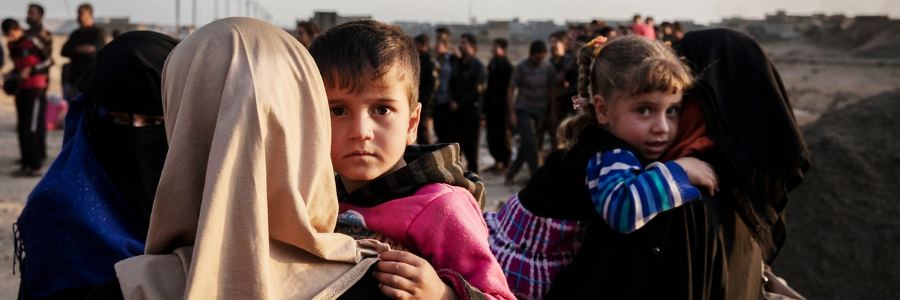- 246,434 Syrian refugees registered as of September 30
- 52,911 IDPs reached with protection monitoring in September*
- 3,639 Persons of concern received cash assistance in September (2,874 IDPs/765 refugees) [50,394 IDPs/25,590 refugees cumulative in 2017]
- 102,876 IDPs received shelter assistance in September* UNHCR is producing regular Flash Updates, Dashboards and Protection Updates on current emergency situations in Iraq, which can be found at UNHCR Global Focus.
- 185,342 IDPs received CRI assistance in September*
Main Activities
Protection
- Refugees – UNHCR coordinates the response for refugees with all local and international partners. Activities include registration, protection monitoring and advocacy, psychosocial support, child protection, and sexual and gender-based violence (SGBV) services. Resettlement to third countries is pursued for a small number of refugees with acute vulnerabilities.
- IDPs – IDP protection is a significant part of UNHCR’s work in Iraq. Direct interventions are undertaken with local, regional and national authorities to ensure that those displaced can access safety in camps and in non-camp locations. Protection monitoring teams have been deployed to identify protection and assistance needs, which directly inform protection responses, including provision of legal assistance on a range of issues such as missing civil documentation; prevention and response to GBV and sexual exploitation and abuse (SEA); child protection; reuniting separated families; coordinating IDP protection responses with the Government, NGOs and UN, and provision of other critical protection support.
- IDP Returns – Ensuring that returns are voluntary, safe and in dignity is a strategic priority for UNHCR and the humanitarian community in Iraq. UNHCR monitors the return of displaced persons to their areas of origin and intervenes with authorities when there are incidents of barred returns; risks of forced or pressured returns to areas which are unsafe and can cause personal protection risks; contamination with explosive remnants of war (ERW) and improvised explosive devices (IED); presence of militias; proximity to conflict areas; widespread destruction of property; and/or the absence of critical infrastructure and basic services.
Shelter and NFIs
- UNHCR provides shelter assistance and CRIs, and coordinates with humanitarian actors to complement the work of local authorities to improve living conditions of vulnerable IDPs in camp and non-camp settings throughout Iraq.
- 88 IDP camps in Iraq host approximately 694,000 IDPs. 47 of these camps are located in the Centre/South, and 41 are in KR-I. UNHCR has built or rehabilitated 39 camps (20 in the Centre/South and 19 in the KR-I). UNHCR is also engaged in the provision of assistance to non-camp IDPs.
- 97% of Syrian refugees in Iraq live in the KR-I; 38% stay in 9 camps, with the remainder living in urban and periurban areas. Shelter priorities for Syrian refugees include the improvement and upgrading of shelters. Of the 19,000 plots in refugee camps in the KR-I, over 95% have been improved with concrete bases for the tents and an individual kitchen, latrine, and shower. Over 65% have been upgraded with solid house-like structures.
Original source: UNHCR.
Posted on 31 October 2017

